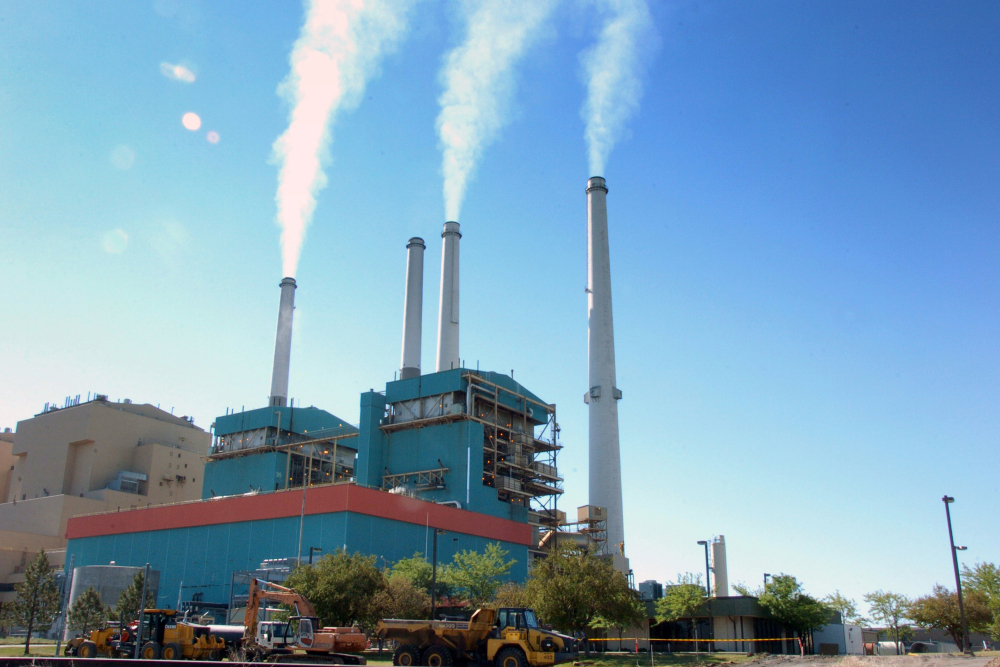WASHINGTON — A seemingly divided Supreme Court weighed the Obama administration’s first-ever regulations aimed at reducing power plant emissions of mercury and other hazardous air pollutants that contribute to respiratory illnesses, birth defects and developmental problems in children.
The justices heard arguments Wednesday in a challenge brought by industry groups and Republican-led states to the Environmental Protection Agency’s decision to take action against coal- and oil-fired power plants that are responsible for half the nation’s output of mercury.
Several conservative justices questioned whether EPA should have taken costs into account when it first decided to regulate hazardous air pollutants from power plants, or whether health risks are the only consideration under the Clean Air Act. The EPA did factor in costs at a later stage when it wrote standards that are expected to reduce the toxic emissions by 90 percent.
Justice Antonin Scalia was critical of the agency’s reading of the provisions of the anti-air pollution law at issue in the case throughout 90 minutes of arguments. “It’s a silly way to read them,” Scalia said.
The court’s four liberal justices appeared more comfortable with EPA’s position, leaving Justice Anthony Kennedy as the possible decisive vote.
Solicitor General Donald Verrilli Jr. said EPA followed the same process in deciding whether to regulate other sources of emissions, including from cars.
The case is the latest in a string of attacks against the White House’s actions to rein in pollution from coal-burning power plants. The Obama administration is seeking to use the Clean Air Act for the first time to control mercury and carbon pollution from power plants.
But numerous states have already filed challenges to a proposed rule to curb the pollution linked to global warming from coal-burning power plants. And Congress is working on a bill that would allow states to opt out of any rules clamping down on heat-trapping carbon dioxide.
The legal and political challenges ahead could undermine U.S. efforts to inspire other countries to control their emissions, as they head into negotiations in Paris on a new international treaty later this year.
The costs of installing and operating equipment to remove the pollutants before they are dispersed into the air are hefty – $9.6 billion a year, the EPA found.
But the benefits are much greater, $37 billion to $90 billion annually, the agency said. The savings stem from the prevention of up to 11,000 deaths, 4,700 nonfatal heart attacks and 540,000 lost days of work, the EPA said.
A disproportionate share of the 600 affected power plants, most of which burn coal, are in the South and upper Midwest. Michigan Attorney General Bill Schuette, representing 21 states at the Supreme Court, said the law requires the EPA to take account of costs before stepping in. The states and industry groups also said the agency overstated the benefits of reducing mercury emissions.
Several utilities that already have installed the equipment or that primarily rely on natural gas and nuclear power to make electricity said the EPA rules are economically practical. Moreover, they said that until the rules take effect their competitors who haven’t yet complied with the rules have an unfair advantage.
A court ruling is expected by the end of June.
Send questions/comments to the editors.



Success. Please wait for the page to reload. If the page does not reload within 5 seconds, please refresh the page.
Enter your email and password to access comments.
Hi, to comment on stories you must . This profile is in addition to your subscription and website login.
Already have a commenting profile? .
Invalid username/password.
Please check your email to confirm and complete your registration.
Only subscribers are eligible to post comments. Please subscribe or login first for digital access. Here’s why.
Use the form below to reset your password. When you've submitted your account email, we will send an email with a reset code.